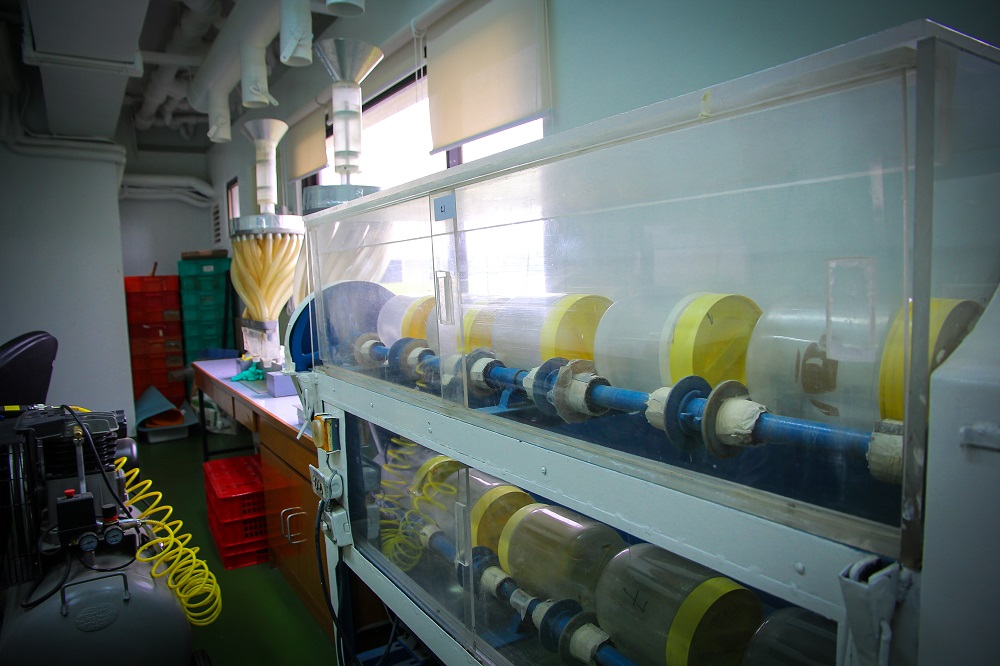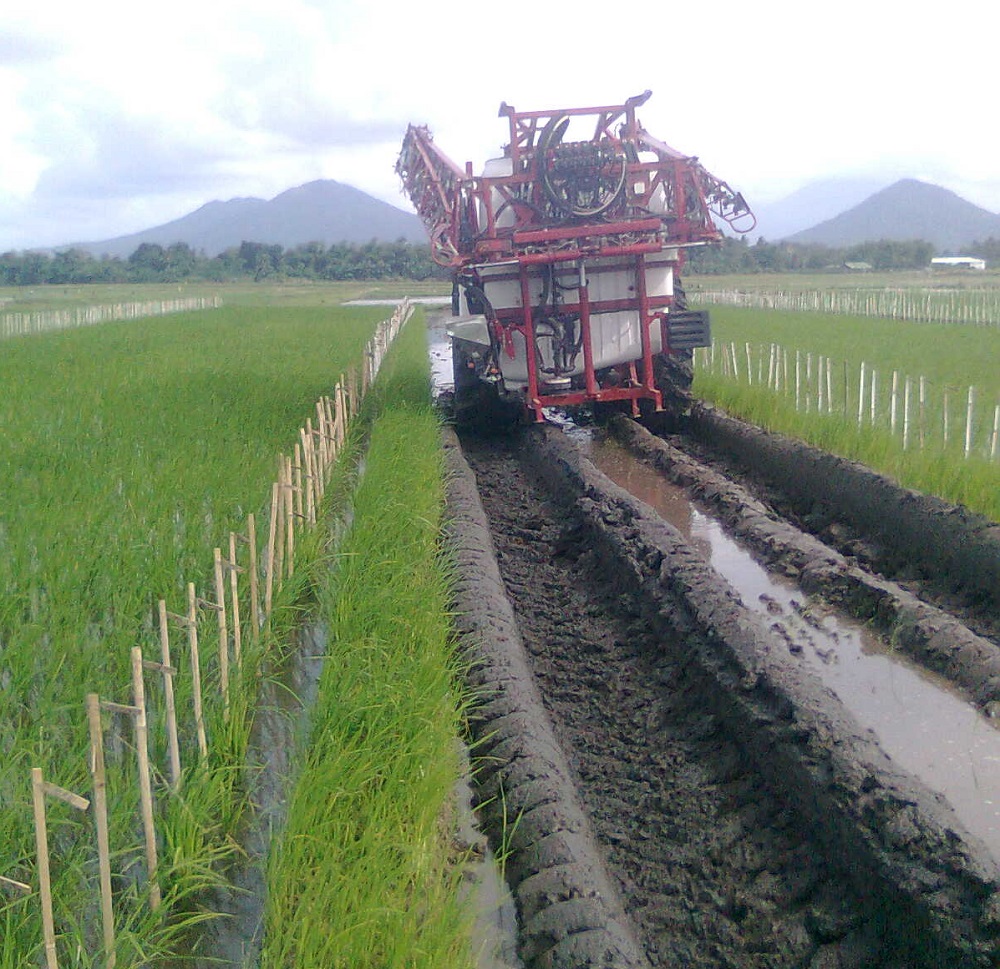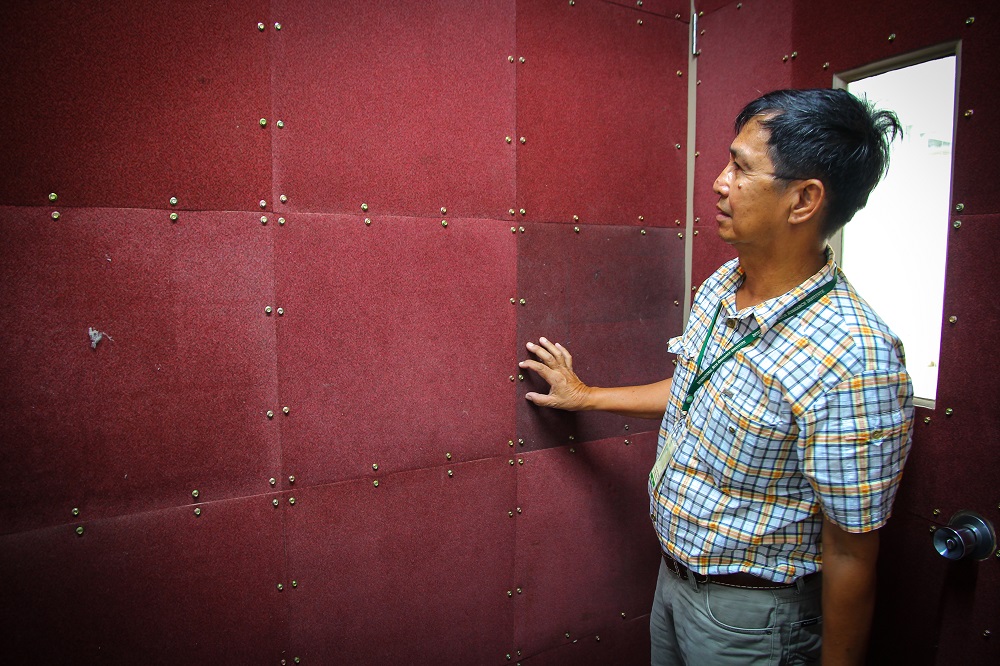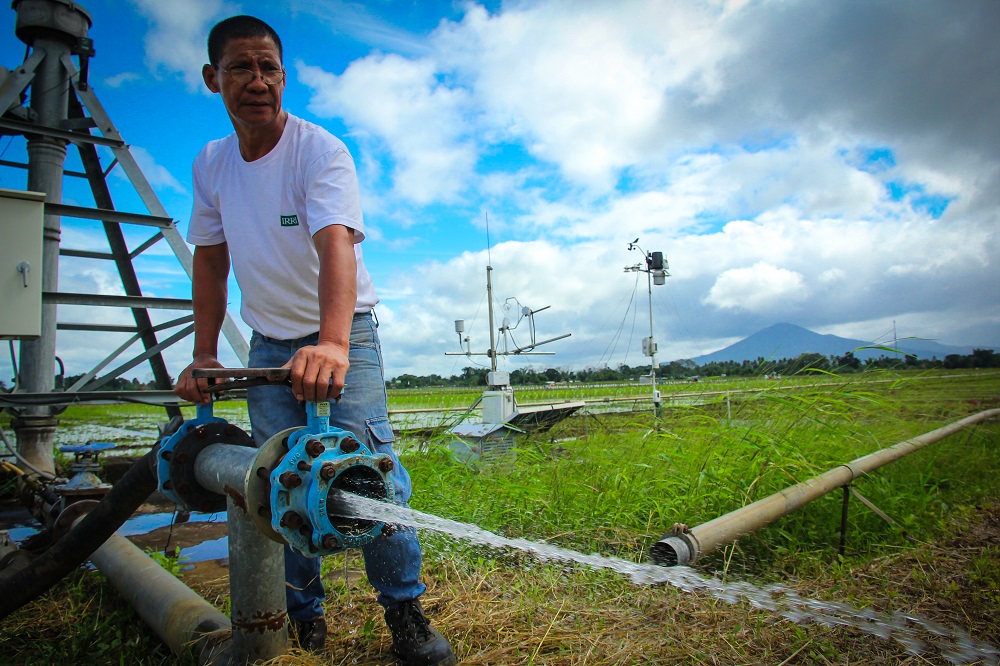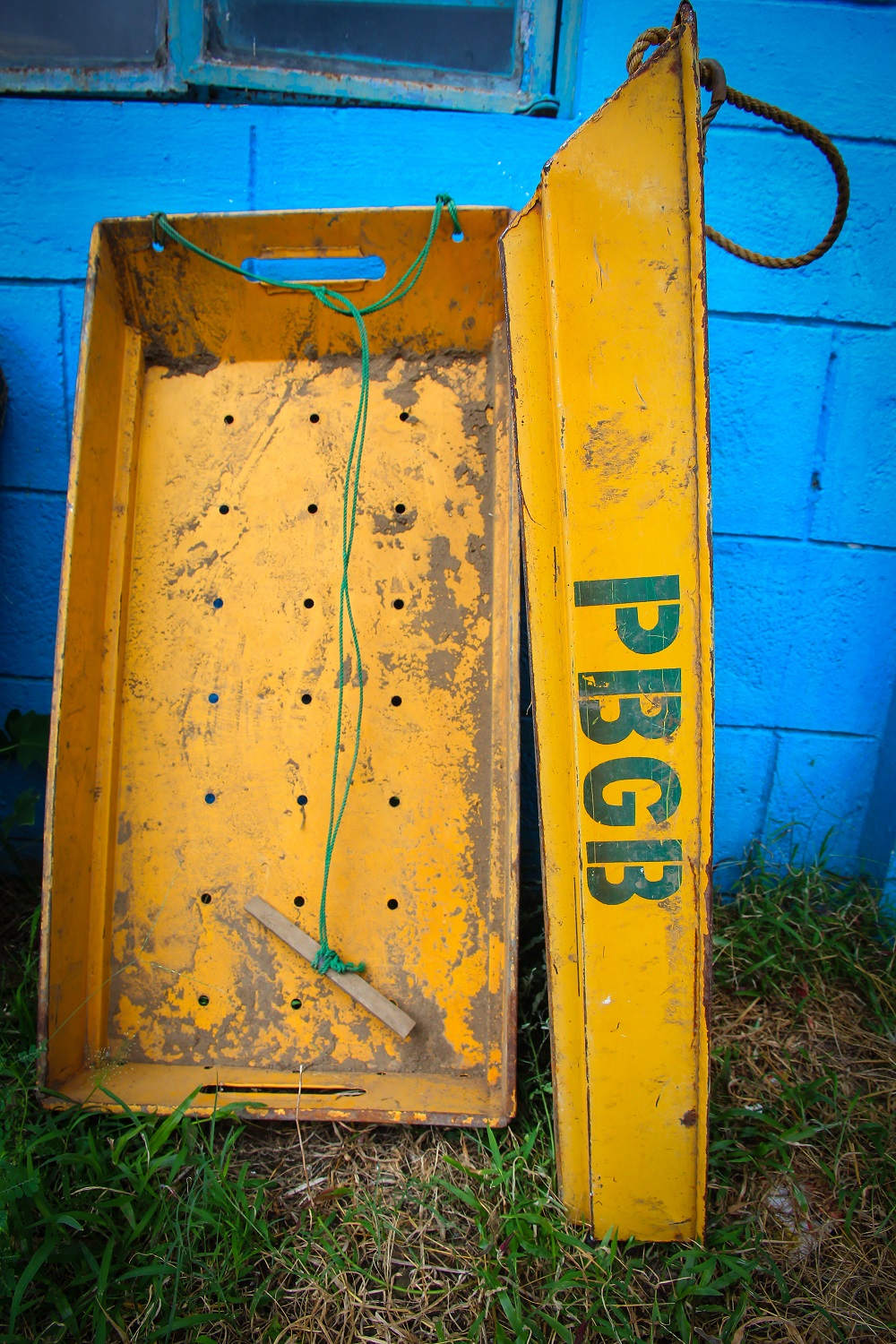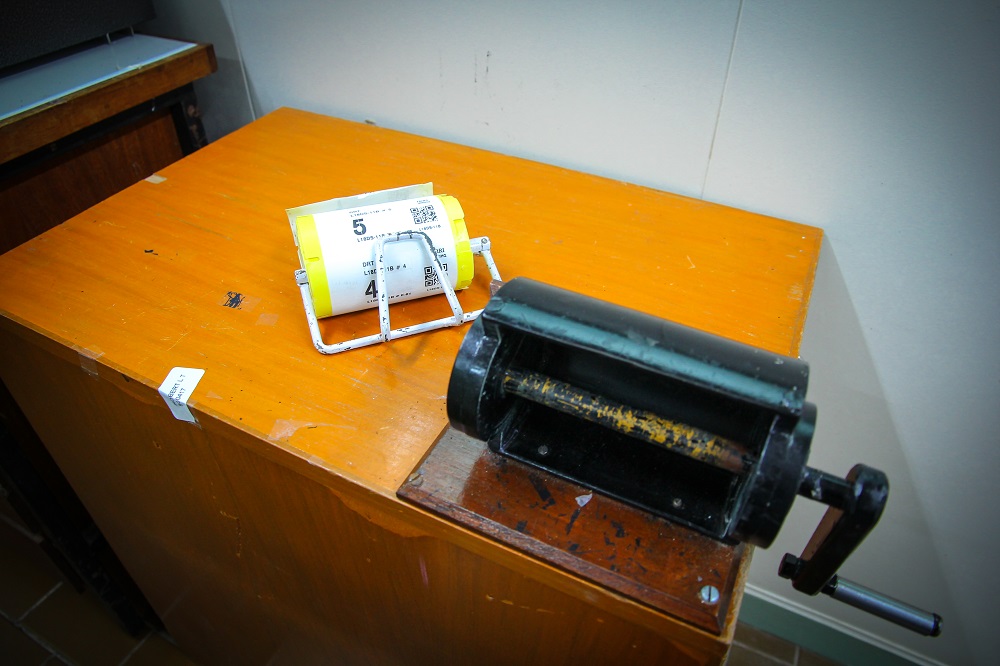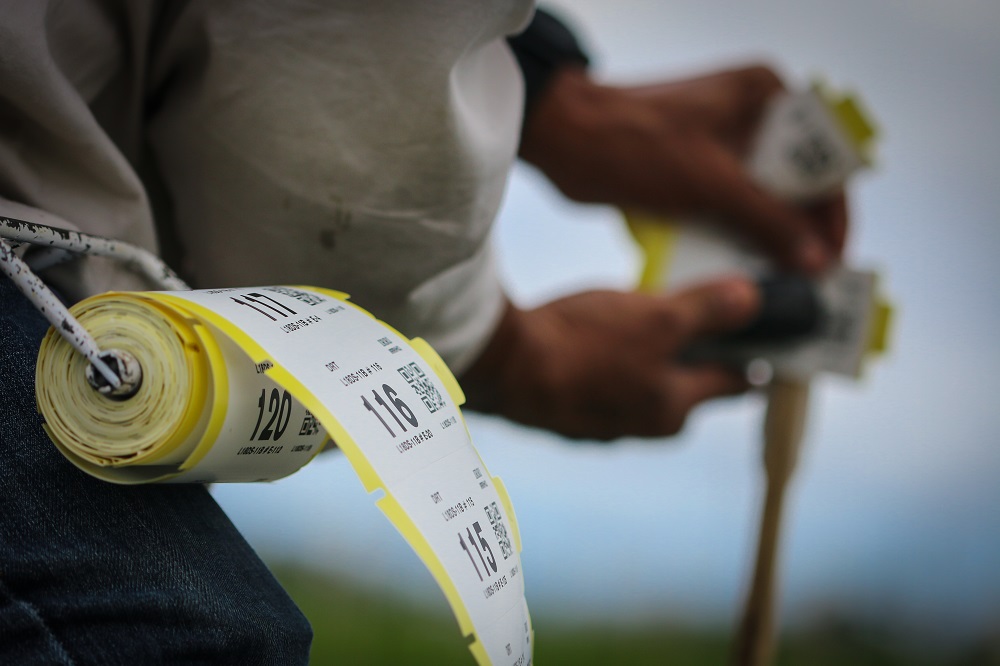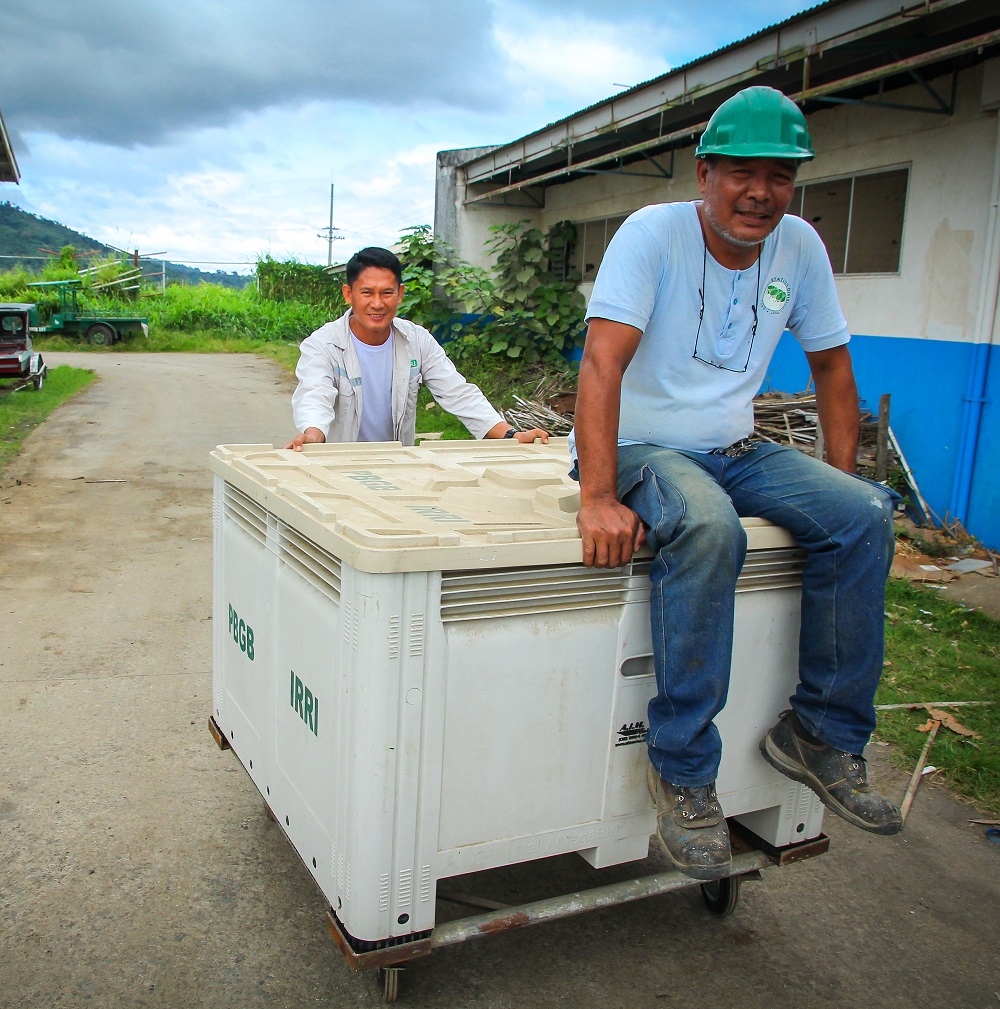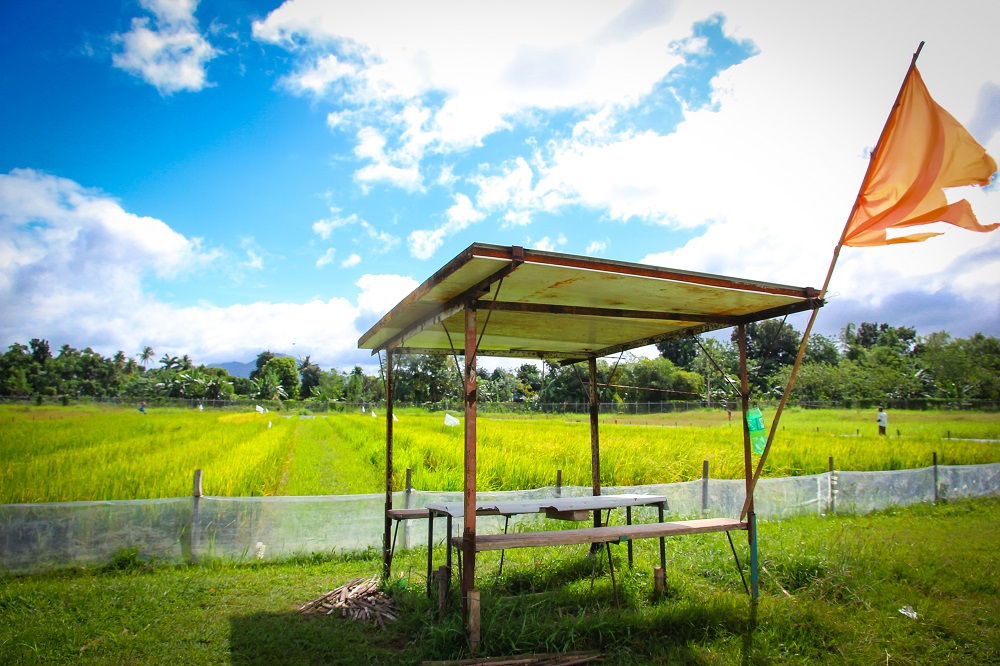Outside the spotlight that shines on scientific breakthroughs are a number of creative and ingenious devices that help improve day-to-day operations at the International Rice Research Institute (IRRI).
At IRRI, innovation, like rice, is life. Working with other research centers and partners around the globe, IRRI scientists strive tirelessly to discover, translate, and integrate scientific advancements that enable the adoption of technologies, practices, and policies to solve the complex global problems of its beneficiaries in rice-growing countries.
But, innovations at the institute are not limited to the confines of its laboratories. Albert Einstein once said, “Innovation is everyone’s responsibility, not just R&D’s.” Paul Cornelio Maturan and Rolando Guevarra are just two of the innovators at the institute who apply their problem-solving creativity and resourcefulness to improve IRRI’s day-to-day operations.
Mr. Maturan is a scientist and part of a project that seeks to make the Philippine rice breeding program more efficient. In between, he constantly works with other staff members to provide solutions to problems ranging from moving heavy objects to reducing noise and dust pollution and making a process cheaper and easier.
“Whenever Paul sees people struggling with their chores, he thinks of ways to make the job easier,” said Mr. Guevarra, a mechanic and fabricator at the Zeigler Experiment Station (ZES). “He discusses his ideas with me and I come up with the prototypes.” Ultimately, the seemingly small impact of these innovations helps researchers get the big jobs done—faster and better.
The seed-treatment machine Innovator:
Mr. Maturan IRRI’s Seed Health Unit, established in 1982, conducts major rice seed health testing for phytosanitary certification and post-entry clearance. It is the single gateway for all rice seeds, rice grains, nonseed biological materials, soil samples, and materials other than rice coming into and going out of IRRI. For exported materials, especially seeds, the unit ensures compliance with the plant quarantine regulations and seed health standards of the importing country.
Problem: Conducting treatment of seeds (between 500 and 2,000 grams) was laborious. The process consisted of putting the seeds inside a plastic container and shaking it until all the seeds were uniformly coated with fungicide.
Solution: The seed-treatment machine can treat from 20 to 10,000 grams of seeds simultaneously. The machine not only reduces the treatment time but also is safer and more efficient than the manual method. Since the early 1980s, hundreds of thousands of seed samples bound for different countries have passed through the machine.
The two-levee pathway
Innovators: Mr. Maturan and Teodoro Cuevas
Some of the world’s most productive and important rice varieties are developed and first tested at IRRI’s ZES. These include IR8, IR36, and IR42, which dramatically increased rice’s yield potential, ushering in an exciting new era in Asian food security and rural development.
Problem: Wide rice bunds are necessary when tractor-mounted pesticide sprayer booms are used in field experiments. Constructing wide rice bunds is prohibitively expensive, costing about USD 13,500 per hectare. It also requires heavy equipment such as a backhoe, dump truck, and grader. The alternative is to use manual pesticide application, a health hazard for workers even with proper safety equipment.
Solution: Building two levees parallel to each other can serve as a pathway for a tractor sprayer. The construction of the levees costs only a fraction of the wide rice bunds at USD 192 per hectare. In addition to the tremendous savings, the two-levee pathways result in more effective spraying since the sprayer boom is closer to the plant canopy, resulting in less chemical drift.
A sound-proof vacuum room
Innovators: Mr. Maturan (in photo) and Mr. Cuevas
Emasculation is the process of removing the anthers from the florets of the rice plant. The simplest and most efficient emasculation technique is to clip the spikelets and remove the remnant anthers with tweezers. IRRI’s emasculation facility uses a vacuum for faster and more efficient removal of the anthers.
Problem: Vacuums generate deafening noise levels. The noise level of a standard household vacuum cleaner is 78–80 decibels, with some models capable of producing sound above 80 decibels. The noise produced by the vacuum machine during emasculation is significantly higher than that. In addition, the small confined space of the vacuum chambers amplifies the sound further and renders the earplugs worn by workers almost useless. Chronic exposure to loud noises has been linked to hearing impairment, hypertension, ischemic heart disease, annoyance, and sleep disturbance.
Solution: Acoustic foam panels were attached to the walls of the vacuum chamber, thus dramatically reducing the noise level. The foam panels acted as sound absorbers and prevented the noise from continuing to bounce and echo throughout the chamber.
A pressurized irrigation outlet
Innovators: Mr. Maturan and Efren Bautista (in photo)
Rice and water are practically inseparable. At the ZES, the availability of irrigation water is essential to many of the experiments conducted there, particularly during the dry season.
Problem: Using diesel-powered water pumps and gravity irrigation is slow.
Solution: Install a pressurized irrigation outlet coming from a pivot irrigation system. It takes half the time to irrigate the field. The water pressure is also strong enough to enable the switch from gravity irrigation to sprinkler irrigation.
Metal seedling trays
Innovators: Messrs. Maturan and Cuevas
Although IRRI is exploring direct-seeded rice (DSR) systems as an alternative to manual transplanting, the traditional method of growing rice is still widespread. Therefore, many rice field studies at IRRI continue to employ manual transplanting.
Problem: IRRI’s field staff use wooden seedling trays that are quite heavy when dry and even heavier once the wood absorbs water. The box shape of the wooden seedling tray makes it difficult to pull or push across the muddy field surface and it must be carried from one spot to the next. The trays also tend to become stuck in the mud.
Solution: A fabricated metal seedling tray is lightweight and its sled-like shape allows it to slide across the paddy; so, it can be easily pulled. Holes at the bottom of the tray allow water to keep the roots of the rice seedlings wet.
The label roller
Innovators: Mr. Maturan, Ruth Carpio, and Mr. Guevarra
In any experiment, proper labeling is an effective tool for increasing efficiency, improving accuracy, and reducing errors. Labels also play an important role in the management of an experiment.
Problem: Although label printers have eliminated the need for handwritten labels, they do create another problem. A single field experiment at the ZES may require thousands of tags that a printer rolls out as a single narrow strip—up to several meters long—that ends up tangled on the floor. Rolling up a strip of labels manually could take up to half an hour and leave ink stains on the hands.
Solution: The label roller makes it easier to handle the tags. By feeding the end of the strip into the roller, even a strip consisting of thousands of tags can be rolled up in minutes, minus the ink stains.
The label holder
Innovators: Mr. Maturan, Carmela Malabanan, and Messrs. Cuevas and Bautista
Problem: Unlike in laboratories, installing labels in a field experiment is more challenging. Each tag must be carefully removed from the rolled-up strip of labels and attached to a bamboo stick. Installing thousands of labels requires a lot of time and people.
Solution: The label holder enables a researcher or assistant to place several tags on the side of the body, thus facilitating the attachment of the label.
Megabins and racks on wheels
Innovators: Messrs. Maturan, Cuevas (back in photo below), and Guevarra (front)
Problem: At the institute, it is not uncommon for workers to move heavy loads of paddy, fertilizer, and soil samples, among other things. But, the megabins and racks, which can hold loads of up to 300 kilograms, are not designed for mobility. Lacking wheels, they may require several able-bodied men to drag a fully loaded container across a smooth concrete surface. On rough surfaces, these containers are virtually unmovable and their contents must be carried manually to their destination.
Solution: Wheels, which are not part of the manufacturer’s design, were added to the megabins and racks. A single worker can now easily move a fully loaded container even on rough surfaces.
Sturdy shelters
Innovators: Mr. Maturan, Juanito Rosario, and Mr. Guevarra
Problem: Commercial umbrella-type tents provide scientists and field staff performing scientific measurements or recording observations in the middle of fields with much-needed shelter. This is particularly essential during the long dry season in the Philippines when the temperature ranges from 21 to 32 °C. The tents, however, easily topple in strong winds.
Solution: Durable scrap materials were fashioned into field shelters. The fabricated shelters are not only reliable and sturdy; they can be transported from one spot to another if needed.

